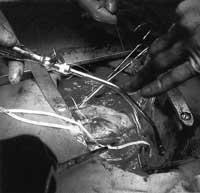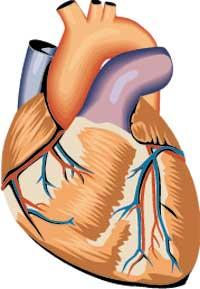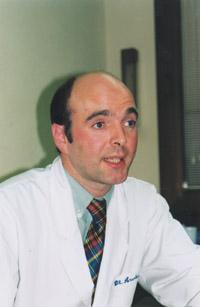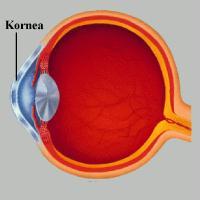Human tissues: from storage to production
1999/01/01 Imaz Amiano, Eneko - Elhuyar Zientziaren Komunikazioa | Kortabarria Olabarria, Beñardo - Elhuyar Zientzia Iturria: Elhuyar aldizkaria
Basque Center of Transfusions
Need to unify the service
Despite the sudden appearance of the news, the centralization of the human tissue conservation service has not been done from one day to the next, it began before and there was a need to meet in one place. In this case, it is considered that the system that guarantees quality in all processes of conservation of human tissues will be properly controlled from the reception of the material to the development of the process of freezing and completion of the conservation period.
In fact, the Basque Center for Transfusions is oriented to all these processes, since the only task of those who work in it is to bring the whole system in an adequate way. Another so much can be said of the demand, since the centralization of the service facilitates that at all times there is everything, since what is missing can be requested. So far it has happened that in a hospital, for example, there has been some kind of human tissue left over and that it is missing in another.
Economic reasons for change are also argued. Just follow the logic to realize it: less fridges, less maintenance costs, etc. In the Basque Transfusion Center of Galdakao, the tissues obtained with the authorization of donors will be stored: bones, tendons, corneas, skin, heart valves and vascular segments. However, the simple authorization of the donors is not enough to guarantee the donation of the tissues, since to avoid infections a thorough study is carried out to each donor, of course, before the intervention also studies are carried out to the receptor.
Conservation of tissues
The subject of permits is necessary because the tissues are obtained from two sources: living people and corpses. From the survivors, soft bones, usually femur heads, heart valves drawn from transplants, skin and material for autografts are extracted, while tendons, large bones, large amounts of skin, corneas, etc., are extracted from the corpses. Once the tissues are obtained, before being delivered to another person, they must be stored, being this the main task of the tissue bank. Not all types of tissues are preserved equally, each has its shape.
Bones, tendons and tissues of cartilage

They are cleaned before storage and preserved in saline serum eliminating soft tissues. The bones and tendons are stored in inert, waterproof wrappers, designed to withstand cold and sterilized environments. Before saving the tissues, or keeping them depending on the tissue, they are introduced in solutions containing albumin or antibiotics. For the storage of cartilage tissues, to prevent the death of cells at low temperatures, it is essential to use anti-cold solutions.
Cryopreservation is the most commonly used system for storing cartilage bones, tendons, and tissues. The optimal temperature for the conservation is not known with certainty, since the closing and expansion of the refrigerators presents serious incidents, although the experts of Osakidetza recommend to maintain a temperature less than -80ºC. Freezing can be done using liquid nitrogen or electric refrigerators, of course with safety measures. Tissues stored in refrigerators must be stored for a minimum of three weeks (minimum time for analysis results) and for a maximum of one year, while those frozen with liquid nitrogen have no time limit. For the use of the frozen tissue it is allowed to keep it at a maximum temperature of 4 °C for 24 hours, but not from there. There are other systems of freezing of bones, tendons and cartilage tissues, but here they are not used.
Home page Portada
In the Autonomous Community of the Basque Country only skin transplants are performed in the hospital of Cruces, so the skin that will be stored in the Basque Center of Transfusions will be removed and received in the hospital of Cruces. The skin reaches the tissue bank after passing the usual controls. Bark grafts can be made in both fresh skin and cryopreservation. Fresh skin is stored in closed containers at a temperature of 4ºC and can be kept in the refrigerator for up to two weeks. When stored in cryopreservation, the skin enters several dissolutions between -70 °C and -196 °C.
No specific storage time is available for the area so stored, as it depends on the possibilities of the warehouse. For transfer to the operating theatre, it can be carried in liquid nitrogen (-196 °C), nitrogen vapor (-130 °C/-180 °C) or dry ice (-50 °C/-70 °C). The unused surface, without cryopreservatives, can be maintained for a week at a temperature of 4ºC. To remove the ice, the crust in the bags is made by immersing in water at a temperature of 37ºC. Subsequently it is introduced in sterile solutions formed by salts for cleaning.
Corneas Corneas (Corneas)
They are stored in aseptic solution at a temperature of 4 °C and can be preserved up to 15 days.
Cardiac valves and vascular segments
For the conservation of the cardiac valves and vascular segments, in general the same bone storage system is used, but using cryoprotectors to avoid its deterioration. The process begins in the programmed refrigerator, slowly lowering the temperature to reach the -120ºC. At that time, liquid nitrogen is introduced.
Tissue bench to operating theatre
The tissues stored in the Basque Center of Transfusions are used in operating theatres when necessary: cornea in transplants, tumor surgery, osteoarthritis, burns, etc. Although there are exceptions, they are usually frozen in boxes and can be used 24 hours later if stored at a temperature of 4ºC. Surgeons must apply for them and carry a thorough control over what has been requested, how it is, how it has been given, who has asked for it, when, how much… and many more details. This rigour has a single objective: to know what happens at every moment with each piece, which can guarantee the success of the operations.
Towards a banking reality of organs

Some late grades (aquatic animal up to 1 mm) that remained dried for 120 years have been revived in a museum for some time. These animals can survive for a long time by eliminating most of the water from the body and that is the way scientists want to use. In fact, until now the organs have been preserved in cold weather, which generates problems by damaging the cells of the tissues. Thus, the organs cannot be stored for more than 30 hours and in the case of hearts and lungs the conservation period is only 4 hours. Wanting to store water from the organs also causes the same or greater damage.
Now, a group of Japanese researchers have followed the pattern of tardigrades to keep the hearts of rat for 10 days and get them back on track. Seeing that tardigrades use sugar called trehalosa to stabilize the cells of their tissues, Kunihiro Seci and his colleagues at the University of Kanagawa have used this same sugar in their trials. The water of the organs was extracted with a solution of trehalosa and deposited in silicagelas. They were then removed and stored in hermetic containers filled with biologically inert perfluorocarbons at 4°C.
Ten days later, they were heated and in half an hour they returned to beat, demonstrating that the measurements of the electrical activity were kept safe. The next steps would be to confirm autopsy safety, store the organs for at least one year, and finally to test with human organs. If this methodology were to thrive, it would be a great step forward in the creation of human organ banks, which would make things easier when transplants are done.

Gai honi buruzko eduki gehiago
Elhuyarrek garatutako teknologia






